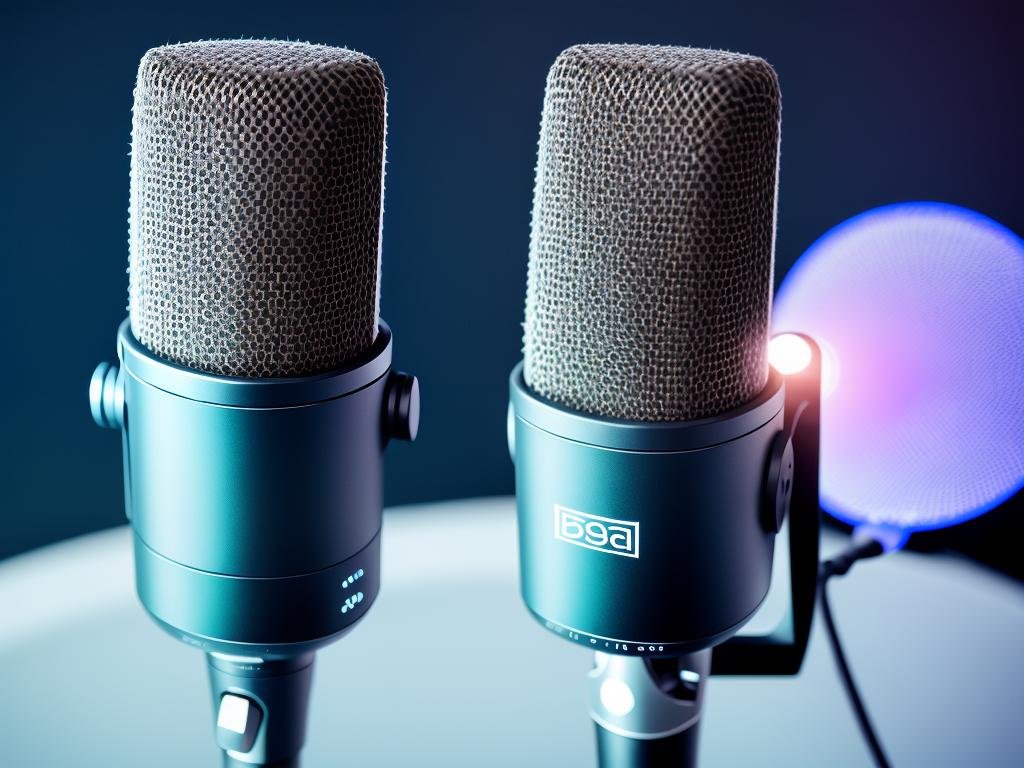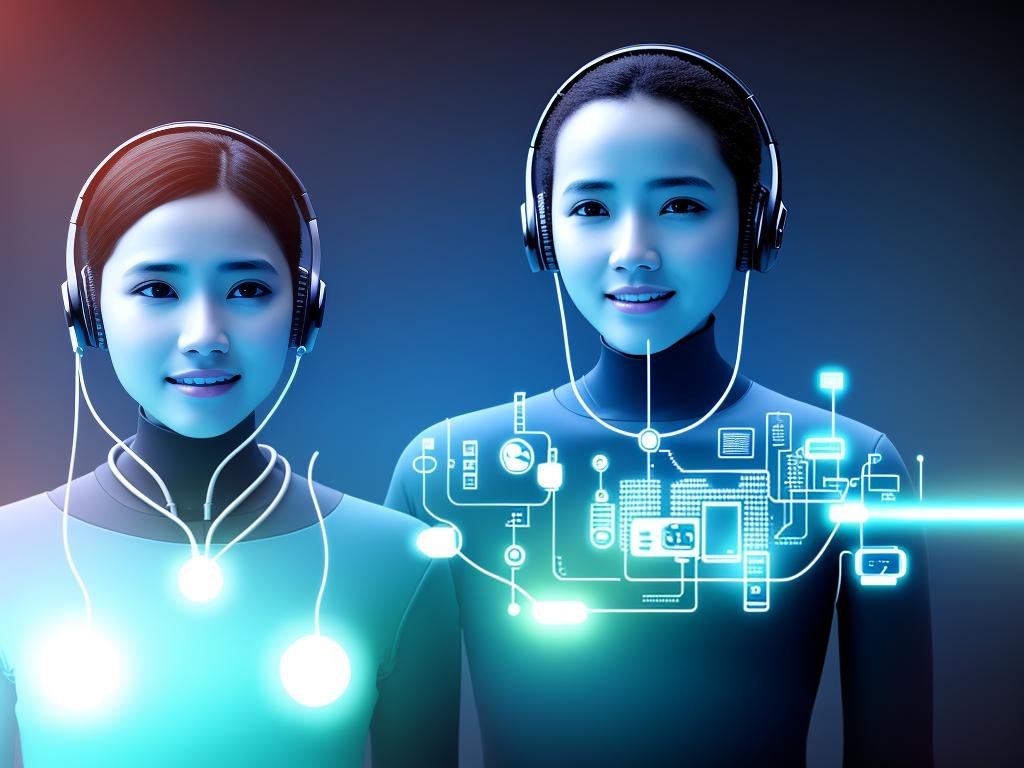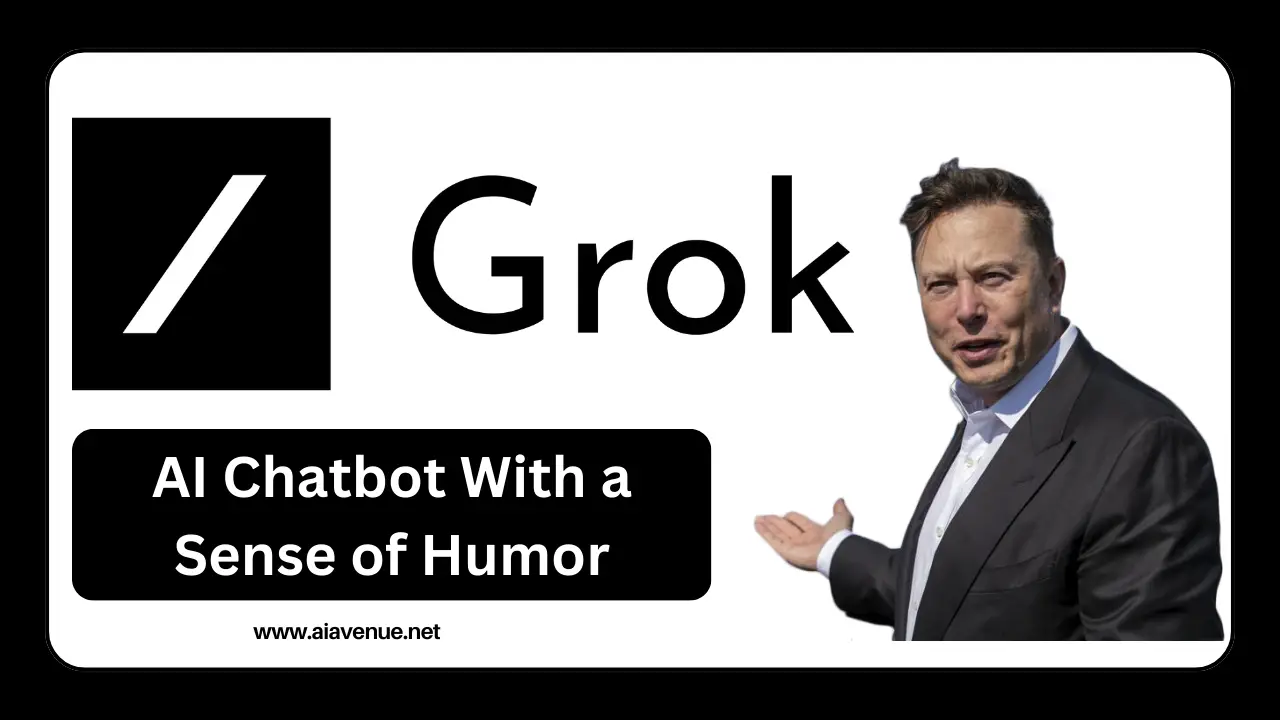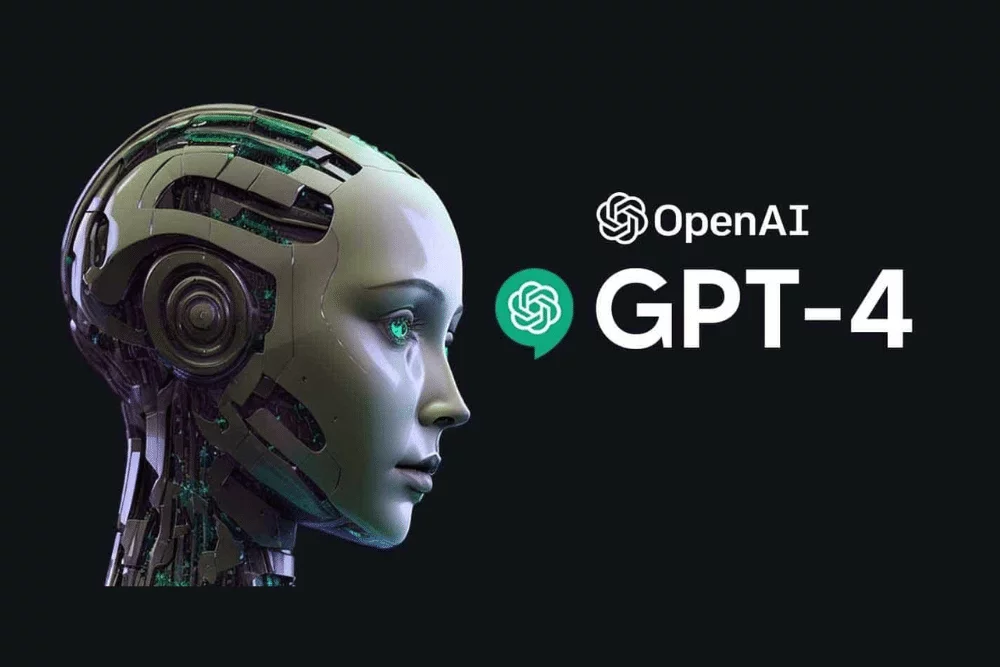In a world where technology is rapidly reshaping our daily interactions, one of the most groundbreaking advancements is the rise of Artificial Intelligence (AI) in speech recognition. At the intersection of audiology and computer science, speech recognition systems translate spoken language into written text, acting as a vital technological mediator in our communication with machines. This document aims to walk you through the fascinating aspects of this technology, from its underlying mechanics to the latest innovations and their impacts across various sectors. In this exploration, it also dares to peek into the future, uncovering the promising and potential advancements that lie ahead in AI-powered speech recognition.
The Mechanism of Speech Recognition
The Foundation: Understanding Sound Waves
Sound waves, from the perspective of physics, are the key to explaining the concept of speech recognition. When we talk, we’re essentially creating vibrations in the air that travel as waves. These waves carry the information of the speech, and they’re captured by microphones and turned into electronic signals.
From Sound to Text: Converting Speech into Written Words
Converting spoken words into text has been possible for quite some time, but Artificial Intelligence (AI) advancements have significantly improved this process. Speech recognition software, to understand the words we’re speaking, first converts these sound waves into a digital format. The software then analyzes these digital sound waves and translates them into text according to the patterns it recognizes. Basically, it’s identifying different words and sentences by interpreting the unique wave patterns.
Machine Learning and Algorithms: The Core of Speech Recognition
One of the key advancements in AI and speech recognition is the use of machine learning and algorithms. Algorithms are the set of rules that the software follows to analyze and recognize the sound waves and convert them into text. These algorithms have been developed over many years and are based on an immense amount of data, taking into account many different languages, accents, and dialects.
Machine learning plays a crucial role in speech recognition, as it allows the software to improve over time. The more data a speech recognition AI receives, the more it understands, and the better it becomes at recognizing speech. This is achieved by applying machine learning, which trains the system to identify patterns and learn from them.
The recent advancement of deep learning, a subset of machine learning, has been particularly significant in this area. Deep learning enables the AI to understand more complex patterns and make more precise predictions.
AI Advancements Shaping the Future of Speech Recognition
The most significant AI advancements related to speech recognition are based on improving the accuracy, speed, and efficiency of the conversion process. The goal is to create a system that can interpret any speech in real-time, regardless of language, accent, or background noise, and convert it into text with near-perfect accuracy.
In recent times, research has been focusing on incorporating a better understanding of context in speech recognition. This is aimed at helping the software to distinguish between words that sound similar but have different meanings depending on the context in which they’re spoken.
Another exciting AI advancement in the field is the creation of dialogue systems or conversational AI. This technology is not just about converting speech to text, but actually understanding and responding to conversational speech.
In today’s fast-paced world, technological progressions revolving around machine learning and artificial intelligence are significantly changing the landscape of speech recognition. They’re facilitating our path towards a tomorrow where engaging with technology through everyday conversational language becomes commonplace.

Current Innovations in AI Speech Recognition
Exploring Current AI Speech Recognition Advancements
From voice-powered assistants facilitating smart home controls and streamlining our day-to-day tasks, to precise transcription services converting our messages and meetings into clear and comprehensible text, the prevalence of speech recognition technologies is undoubtedly on the rise. This piece delves into the exciting territory of the latest advancements in AI and speech recognition. It provides a deep dive into innovative and emerging technologies, the most recent accomplishments in software development, and their intriguing applications that are trailblazing the way we interact with digital systems.
Leading the Charge: Major Tech Giants
Key players in tech, including Google, Amazon, and Apple, have been consistently advancing the field of speech recognition. Google’s Speech-to-Text API, for instance, leverages machine learning technology to accurately dictate spoken language into written text. This technology powers Google’s voice search function and underpins Google Assistant’s voice recognition capabilities.
Similarly, Amazon has made significant strides in developing its virtual assistant, Alexa, equipped with automatic speech recognition (ASR) and natural language understanding (NLU) technology. Amazon’s investment in AI research led to the development of Whisper ASR, an engine fine-tuned to recognize and respond to whispered speech.
Perhaps the most familiar name in the tech world, Apple’s Siri, uses advanced AI to continuously learn from user interactions, creating a personalized experience tailored to the individual user’s voice and preferences. Siri’s continuous learning and adaptability underscore the immense possibilities of AI speech recognition technology.
Bolstering Speech Recognition with Deep Learning
Significant breakthroughs in AI have been achieved through deep learning, a subset of machine learning that imitates how the human brain works by utilizing artificial neural networks. With the ability to analyze and process large amounts of data, deep learning has significantly improved the accuracy in speech recognition systems.
Google’s DeepMind has been at the forefront of implementing deep learning in speech recognition. A recent development from DeepMind involves the utilization of WaveNet, an area of deep learning focused on generating and recognizing speech patterns. Through this technology, AI systems can generate human-like speech, opening possibilities for more natural interactions with AI.
Other advancements in this area include Microsoft’s Project Oxford that developed an API capable of recognizing not just speech, but the emotions conveyed in it. This underlines strides being made towards advancing AI’s ability to interpret tone and context for a better understanding of the speaker’s intention.
AI Speech Recognition: The Future Is Here
Dramatic advancements in AI speech recognition have ushered in a host of practical applications impacting diverse fields such as telecommunication, healthcare, and accessibility aid. This technology is particularly crucial for people with speech impediments, making tasks as simple as a conversation achievable. Google’s Project Euphonia exemplifies this impact, training speech recognition algorithms to comprehend impaired speech, hence enabling communication.
In healthcare, integrating AI into transcribing medical notes from physicians into text leads to increased efficiency and fewer errors. Furthermore, businesses can expand and improve customer service by leveraging AI speech recognition in voice assistants to handle queries or direct calls. This saves valuable time and enhances customer experiences.
To sum it up, the strides taken in AI speech recognition not only represent significant technological progress but also provide effective solutions to numerous sectors. They are redefining human-computer interaction, making digital platforms more accessible and user-friendly. With research and innovation in full swing, the prospects for AI speech recognition appear boundless.

Impacts of AI Speech Recognition
Embracing the AI Speech Recognition Revolution
It’s no longer futuristic to speak of AI-driven speech recognition – it’s the reality that’s redefining various aspects of our everyday lives and business landscapes. Tools as ubiquitous as voice assistants like Siri and Alexa, or transcription services that transform audio into text, all rely on the considerable progress made in this facet of artificial intelligence. This drive is changing the communication paradigm, customer service approaches, healthcare delivery, and several other arenas. We are indeed in the age of AI speech recognition revolution.
Impacts on Customer Service & Communication
AI-enhanced speech recognition significantly impacts customer service. Modern businesses use this technology to improve communication with their customers, mainly through automated phone systems and chatbots. AI speech recognition interacts with customers in a more personalized, effective way by understanding spoken language and responding accurately. This automation improves employees’ productivity by allowing them to focus on more complex tasks while ensuring customers get prompt answers to their inquiries.
Furthermore, the advancements in speech recognition technology have resulted in an explosion of voice-activated devices, enhancing how individuals interact with technology and each other. You can now command your device to read news, set alarms, navigates routes or even write emails – thus making voice a primary input medium.
Impacts on Healthcare
In the healthcare sector, the implications of AI speech recognition are significant. Healthcare professionals use voice recognition technology for transcription purposes, swiftly transcribing patient data and medical reports into electronic health record systems. This technology has eased the burden of paperwork, allowing practitioners more time to focus on patients’ health.
Moreover, AI-driven speech recognition tools are employed in telemedicine. They help doctors to interact with patients remotely, enhancing accessibility to healthcare services, particularly in rural and underserved areas.
Benefits of AI Speech Recognition
The benefits of AI-based speech recognition are as diverse as the fields it touches. These benefits include increased productivity, cost savings, improved accessibility, and enhanced personalization.
Increased productivity can be seen in various sectors where manual tasks, such as transcription or customer service requests, are automated. It significantly reduces the time invested in these activities and allows for a focus on more complex tasks.
AI-driven speech recognition allows for cost savings by automating processes otherwise performed by humans, thereby cutting operational costs. Improved accessibility, on the other hand, is observed in disabled communities where text-to-speech and speech-to-text conversions improve communications.
Challenges and Future Prospects
Despite its considerable advantages and substantial impact, AI speech recognition also faces several obstacles. Its capacity to understand accents, dialects, or languages with less data is still a work in progress. Moreover, the interpretation of homonyms, words pronounced similarly but with different meanings, often leads to inaccuracies.
Nevertheless, the prospect for AI speech recognition technology remains bright. As the development continues, the capability to comprehend different languages, dialects, and intricacies of human speech is predicted to enhance. Concurrently, we stand at the dawn of this transformative epoch, with immense untapped potential this technology possesses.

Future of AI in Speech Recognition
The Evolving Horizon of AI in Speech Recognition
Artificial intelligence (AI), gaining momentum in diverse fields, is making remarkable progress in the domain of speech recognition. This technology, already integral to personal assistance apps, transcription services, and customer service platforms, is poised for more groundbreaking and influential transformations.
Advancements in Research and Technology
The wave of advancements in AI and Machine Learning (ML) has brought about a paradigm shift in speech recognition technology. Scientists and researchers are working relentlessly to refine and enhance the capabilities of AI in understanding and recognizing human speech. Deep Learning, a subset of AI, is particularly effective in identifying complex speech patterns.
Presently, we see state-of-the-art neural networks like Transformer models pushing the envelope in areas like speech translation and Voice Assistants. Soon, voicebots may become much more accurate, relatable, and capable of providing human-like interactions.
Furthermore, AI technology is moving towards achieving polyglot voice recognition. This is the ability of AI systems to understand and interpret multiple languages seamlessly. Futuristic technologies like Translatotron from Google are aimed at direct speech-to-speech translation without requiring intermediate text-to-speech conversion.
Integrating Emotion Recognition
Emotion recognition is another future trend that is expected to play a vital role in AI-powered speech recognition. The technology will not only recognize and transcribe human speech but will also understand the tone, modulation, and emotion behind the speech. This feature will make the automated systems more user-friendly, allowing them to offer personalized interactions based on the user’s sentiments.
Impact on Society and Industry
AI advancements in speech recognition can have a profound impact on both society and various industries. For people with disabilities or language barriers, this could usher in a new level of accessibility and inclusion. Speech recognition technology will enable users to interact with devices, access services, and communicate more effectively.
Several industries stand to benefit from these improvements. In healthcare, medical documentation could be streamlined, allowing providers to focus more on patient care. In the automotive industry, enhanced speech recognition can lead to safer, more responsive voice-controlled systems. In the entertainment sector, it can revolutionize how viewers interact with smart TVs and other devices.
Notably, these advancements will also have implications in terms of ethics and privacy. As such technology becomes more sophisticated and widespread, there will be an increasing need for strict regulations to prevent misuse.
A New Era in Human-Computer Interactions
The future of AI in speech recognition is undoubtedly exciting. As the technology becomes more sophisticated and intuitive, we can expect to see more accurate, efficient, and human-like voice-controlled systems. These advancements will undoubtedly usher in a new era in the way humans interact with computers, breaking down barriers and creating new opportunities in countless fields.

As advances in AI continue to push the boundaries of what is possible in the realm of speech recognition, the role of this technology in our lives is set to deepen and diversify. The future will witness continued improvements in accuracy, adaptability, and user experience. New applications will emerge across domains, including healthcare, customer service, and communication, providing an ever-enhancing level of convenience, efficiency, and inclusivity. While challenges may arise, they will only fuel further innovation and refinement in this ever-evolving field. We stand on the cusp of a future where our words could seamlessly command the technology that surrounds us, thus birthing a new paradigm of interaction in our digital age.


